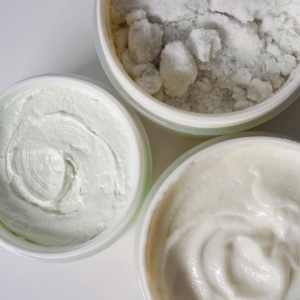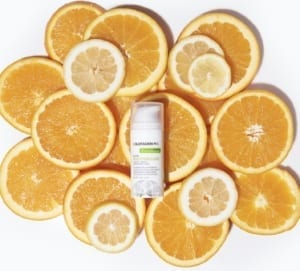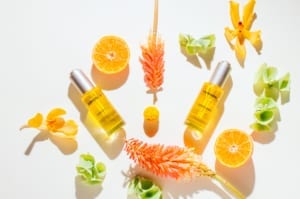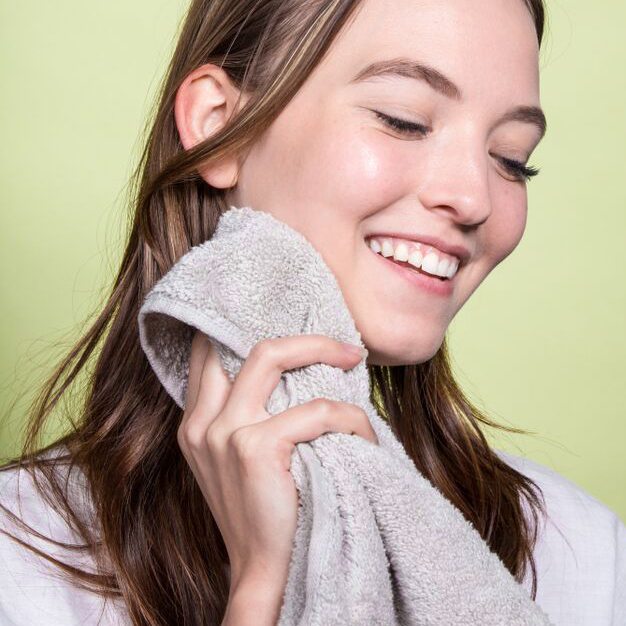The Beginner’s Guide to Clean Living
It’s clear that we’re in the midst of a beauty and lifestyle renaissance, and it’s all centered around this idea of “cleanliness”—that is, the cleanliness of our diets, our beauty routines, and our home and lifestyle products. This renaissance is due, at least in part, to research that has been steadily mounting over the past decade, which shows that the human body absorbs chemicals that go in and on it. Scientific studies have shown that the human skin is capable of absorbing a worrying percentage of chemicals on contact (in fact, research suggests the skin absorbs up 60% of the products we apply). Research conducted by a UK-based personal care brand famously made headlines when it concluded that the average women comes into contact with 515 chemicals per day through her beauty and grooming products alone. One Swedish study found that there are even potentially harmful chemicals found in our clothing. It’s all very scary (and overwhelming) stuff, and it’s only made worse by the amount of contradictory information, fear-mongering, and op-eds that are available in a sinlge Google search. So, what are we supposed to do?
First, take a deep breath, because no one lives a completely “clean” lifestyle. Even those clean beauty bloggers you follow on Instagram, who wear organic cotton and shop at local pesticide-free farmer’s markets aren’t 100% clean. Do you want to know why? Because the word “clean,” doesn’t even have a set definition. A clean diet can mean one thing to one person and something entirely different to another. Clean beauty is the same way. It generally refers to products made from only non-toxic ingredients. However, seeing as the FDA has only banned 11 chemicals in cosmetics, it’s up to brands (and consumers) to define the word for themselves.
The best thing we can do for ourselves is become conscious of our daily routines and the products that we make part of them. The worst thing we can do is stress out about how we can live a completely clean lifestyle (that won’t help anyone). Keep scrolling to see all of the easy swaps you can make on the journey to a cleaner life.
Diet
Let’s start with food, because there’s a lot of emphasis on so-called clean eating. Most experts agree that organic food is best, so if you can, consider incorporating more organic fruits and vegetables into your diet. Avoid processed foods, because they’re just as bad for your skin as they are for the rest of your body (fresh foods, on the other hand, provide vital nutrients and hydration to our skin). That means swapping out bags of crackers and chips for veggies and hummus or a handful of nuts, choosing wild-caught fish or lean meat instead of red meat, and drinking filtered water instead of flavored drinks that contain added sugar and dyes. Making these simple changes each day is an easy way to start on a cleaner, healthier path, without feeling deprived, overwhelmed, or frustrated.
Skincare
 The US has banned 11 potentially harmful ingredients from skincare. The EU has banned over 1300, which is why an easy way to feel more confident in the cleanliness of your skincare products is to make sure they follow EU regulations (most brand will tell you in the FAQ section of the website). Keep in mind, though, there are many American skincare brands that are committed to producing healthy, non-toxic products as well, and all it takes to find them is a little research. Before buying, read up on a brand’s ethos and mission statement. Scroll through a product’s ingredient list. Ask for clean skincare recommendations from friends, family, and acquaintances. In short, a little research can go a long way.
The US has banned 11 potentially harmful ingredients from skincare. The EU has banned over 1300, which is why an easy way to feel more confident in the cleanliness of your skincare products is to make sure they follow EU regulations (most brand will tell you in the FAQ section of the website). Keep in mind, though, there are many American skincare brands that are committed to producing healthy, non-toxic products as well, and all it takes to find them is a little research. Before buying, read up on a brand’s ethos and mission statement. Scroll through a product’s ingredient list. Ask for clean skincare recommendations from friends, family, and acquaintances. In short, a little research can go a long way.
On that note, if you’re unsure about whether or not a product is healthy or not even after doing thorough research, plug it in to EWG’s Skin Deep database. This database is operated by the Environmental Working Group, and it acts as a resource for health-conscious consumers. Thanks to a clear numeric rating system, it’s easy to see how your favorite cosmetics rank in terms of cleanliness.
To avoid overhauling your skincare routine all at once, Dr. Goldfaden recommends swapping out your cleanser and your treatment first, since these are the products that generally have the most impact on your skin. When it comes to cleanser, swap out your old one for Dr. G’s Pure Start Gentle Detoxifying Facial Cleanser, which is full of plant-based actives like rose hip oil, grapefruit, and seaweed. Because what’s left out is just as important as what’s left in, it’s important to note that this cleanser is formulated without any silicone, parabens, mineral oil, or alcohol, all of which can be potentially harmful to the skin.

As for treatment options, there are many. If you’re struggling with dullness and discoloration, try Dr. G’s Brightening Elixir Protect + Hydrate Brightening Serum, which uses ferulic acid and vitamin C to firm and brighten the skin and treat discrepancies in tone. If it’s dullness, dryness, and rough texture that you’re looking to fix, try Dr. G’s Fresh A Peel Multi Acid Resurfacing Peel. Lactic acid, sugar cane, and vitamin C will smooth the skin’s texture, unclog pores, and purify the surface of the skin.
We also want to mention that when it comes to skincare, simplicity is key. After all, your skin really only needs a few effective products to stay healthy and glowing. Don’t overdo it with steps and products you don’t need. Be conscious of what you’re using and listen to your skin. It’s really as simple as that.
Makeup
There are a lot of clean makeup brands that we admire. These include such brands as RMS Beauty, Kosas, tenoverten, W3ll People, and Ilia. To us, they’ve struck the perfect balance between clean beauty and effective beauty, because at the end of the day, we need products that work. If you’re shopping RMS, try the iconic Lip2Cheek, which is a creamy lip and cheek tint that comes in an array of flattering colors. When it comes to Kosas, try the brand’s Weightless Lip Color, which really does feel weightless on the lips. We like tenoverten’s non-toxic nail polish, W3ll People’s Expressionist Volumizing Mascara, and Ilia’s Polka Dots & Moonbeams Illuminator. Like we said, there are a lot of clean makeup products out there, but these are just a few of our personal favorites.
Homecare
We can’t talk about clean living without talking about homecare. This could be anything from cleaning supplies to personal care and beyond. Some of the worst chemicals we keep in our homes fall under this category (just think of how many chemicals you could be keeping in the cabinet under the sink…from bleach to bathroom cleaners and beyond). So, in order to avoid using unnecessarily harsh cleaning products, we like ordering from Grove Collaborative. It’s a site that curates a wide-range of non-toxic homecare and lifestyle products, so you can shop (and swap) with confidence.
One more thing. There’s also a consumer database for homecare products. It’s called GoodGuide, and it gives personal care items, homecare products, and even childcare products a simple health rating, which is very useful when you’re shopping for a product or brand that you’re unfamiliar with. We recommend looking up new products on the database to make an educated decision. After all, a swap is only as good as the product you’re incorporating into your routine.
If there’s one thing we want to leave you with, it’s this: don’t beat yourself up about being perfectly clean in all of its definitions. Simply stay cognizant of the products you’re using each day and make simple swaps in favor of healthier products. Your body and your skin will be all the better for it.
Written by, Kaitlyn McLintock
ABOUT THE WRITER:
Kaitlyn McLintock is a beauty and wellness writer based in Los Angeles. Her work has appeared in such publications as Popsugar, Byrdie, Hello Giggles, Who What Wear, and more. When she’s not writing, researching, and editing, or testing out the latest skincare and makeup products, she’s drinking coffee and spritzing Goldfaden’s Mist RX all over her skin.


